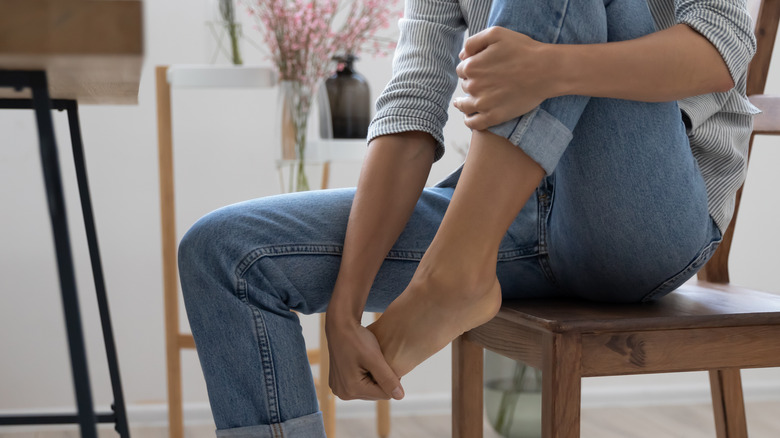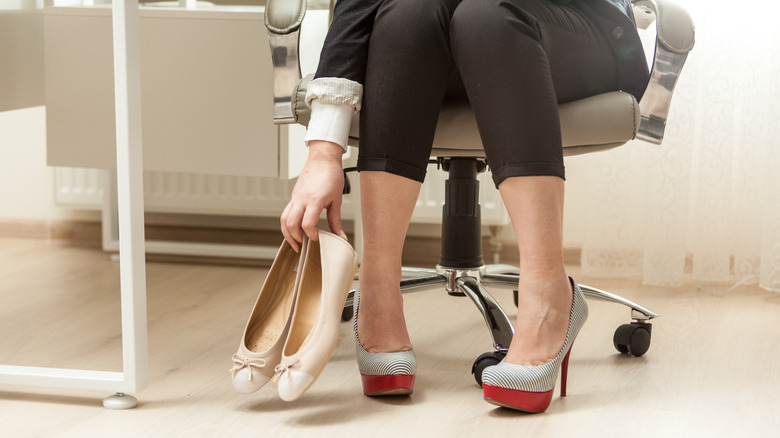Things You Should Never Do When You Have A Blood Blister
Most of us are familiar with blisters. Whether on the heel of your foot while breaking in a new pair of shoes, or on the palm of your hand after a day spent doing yard work, blisters aren't just irritating — they can be downright painful. According to the Cleveland Clinic, these fluid-filled bubbles form under the topmost layer of our skin in response to ongoing friction. Most of the blisters you've gotten in the past have probably been clear in color, but what does it mean when you see a blister filled with blood?
Otherwise known as a blood blister, these red-colored blisters form when something has pinched the skin, rather than rubbed it (via Cleveland Clinic). The pooling of blood you see beneath the epidermis is a result of blood vessel damage. With proper care, blood blisters generally take care of themselves in no more than two weeks, according to Medical News Today. If your first thought is to pop a blood blister, however, this is one of the biggest no-no's when it comes to treatment, reports the Advanced Foot & Ankle Centers of Illinois. Experts say that doing so can lead to scarring or infection. But these aren't the only things we should avoid doing when it comes to treating a blood blister.
What not to do
As tempting as it may be, you'll want to avoid picking and peeling back the skin covering a blood blister, says Advanced Foot & Ankle Centers of Illinois. This can open up the wound, paving an entryway for germs and other contaminants. Additionally, be mindful not to wear tight shoes that can rub against a blood blister and potentially cause more damage.
If the blister has opened, simply start by cleaning the injury with antiseptics before applying a topical antibacterial product and then covering the wound with a bandage. Even for a blood blister that hasn't broken, it's still a good idea to cover it with a bandage to help protect it from further injury.
Additionally, elevating the area and applying a cold compress can help reduce swelling and discomfort. In the event that a blood blister is accompanied by excessive warmth, red streaks, or intense pain, be sure to seek medical attention. Medical News Today also notes that you'll want to contact your doctor if a blood blister repeatedly resurfaces, comes on due to an allergic reaction, or if blood blisters have developed within the mouth, which may indicate an underlying health condition.


